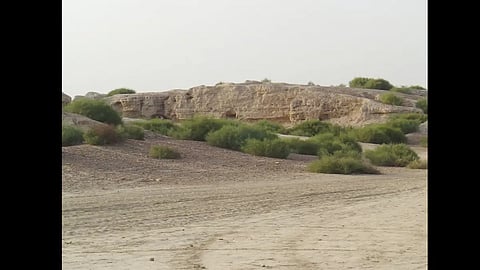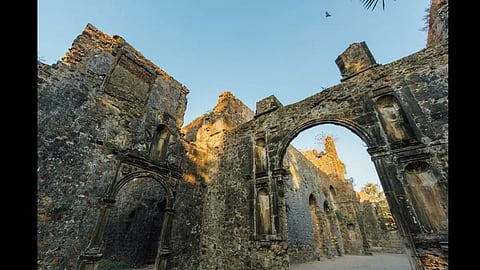You can relive India’s history – through its scripts, sculptures, monuments and art. At the same time, it is equally easy to ignore the same and turn a blind eye to it. Over the long course of Indian history, several towns and places have been lost to the ravages of time, nature and more. Beautiful as these places are, for history lovers and travellers, they also hold important clues to understand the evolution of Indian heritage and society and the lessons we may learn from them even in the modern age.
Finding Beauty And Meaning In India’s Lost Cities
Over time, we tend to forget the things we should value the most. That’s why the ruins of ancient Indian cities should be treasured before they are all lost to time
Here, we take a look at five such sites:
Muziris

Situated in Kerala’s Kodungallur town, Muziris is one of India’s biggest archaeological finds. Mostly thought to be a legend for the longest time, interest in Muziris was revived after archaeological discoveries in 2004. It was a thriving port town (one of India’s most important) that traded black pepper, spices, precious stones, and more, with Rome as far back as the 1st century BCE. This bountiful, profitable export business even helped it in gaining leverage over the mighty Romans. Akananuru – an anthology of Tamil poetry – fittingly described Muziris as “the city where beautiful vessels, the masterpieces of the Yavanas (foreign traders), stir white foam on the Periyar, river of Kerala, arriving with gold and departing with pepper.”
Pattadakal

Pattadakal is well known as a temple town in Karnataka. This UNESCO World Heritage Site, on the banks of the Malaprabha river, is a treasure trove of Shiva temples from the 7th and 8th centuries, besides also being a Jain sanctuary. The temples show a blend of Dravidian and Nagara (north-Indian)/Aryan influences. Of special note among the nine temples is the temple of Virupaksha, built by Queen Lokamahadevi around 740 CE in honour of her husband’s victory over the kings from the south.
Kalibangan

The ruins of the town of Kalibangan in Rajasthan are significant in more ways than one. Evidence of settlements here date back to the Harappan era and even before. Luigi Pio Tessitori, a reputed Italian Indologist, is credited with the discovery of the prehistoric site in Kalibangan, while post independence, Amlānand Ghosh of the Archaeological Survey of India was the first to suggest the existence of a Harappan settlement in Kalibangan. Kalibangan, which literally translates to ‘black bangles, is located on the dried-up banks of the Ghaggar river. Unique fire altars have been discovered here, and Kalinbangan is also believed to be one of the first sites where land was ploughed. Other notable discoveries include seals, bangles and terracotta figures, among others.
Vasai

Vasai, of course, boasts of a far more modern connection than the other entries on this list. Bands and artists such as Coldplay and Major Lazer have shot music videos for their songs (“Hymn for the Weekend” and “Lean on”, respectively) in this historic city. But, one would perhaps be surprised to know that Vasai stretches further back than its Portuguese roots. A fertile ground for traders and merchants for centuries, Vasai dates back to the ancient Puranic times. It came to be occupied by several rulers and administrators – the Gujarat Sultanate, the Portuguese, the Marathas and the British, to name a few. However, it is probably the Portuguese who left a most lasting impact on the city’s heritage. Today, Vasai is known for its stunning beaches and its historic fort (Fort Bassein), churches, mosques, temples, tiny villages, and a Buddhist stupa too.
Dholavira

The lost city of Dholavira received the UNESCO World Heritage Site tag in 2021 – the first site in the Indus Valley Civilisation to have been accorded the honour. The Indus Valley Civilisation is like a huge treasury of stories, history and heritage, and Dholavira is no different. It was once a fortified city with an efficient water management system. The remains of Dholavira’s houses and streets indicate the presence of a stratified society. The city also had a large cemetery with six different kinds of cenotaphs that show the unique view of death that the Harappans harboured. Artefacts of bead, copper and shell, and jewellery made of semi-precious stones, terracotta, gold and ivory have also been found.